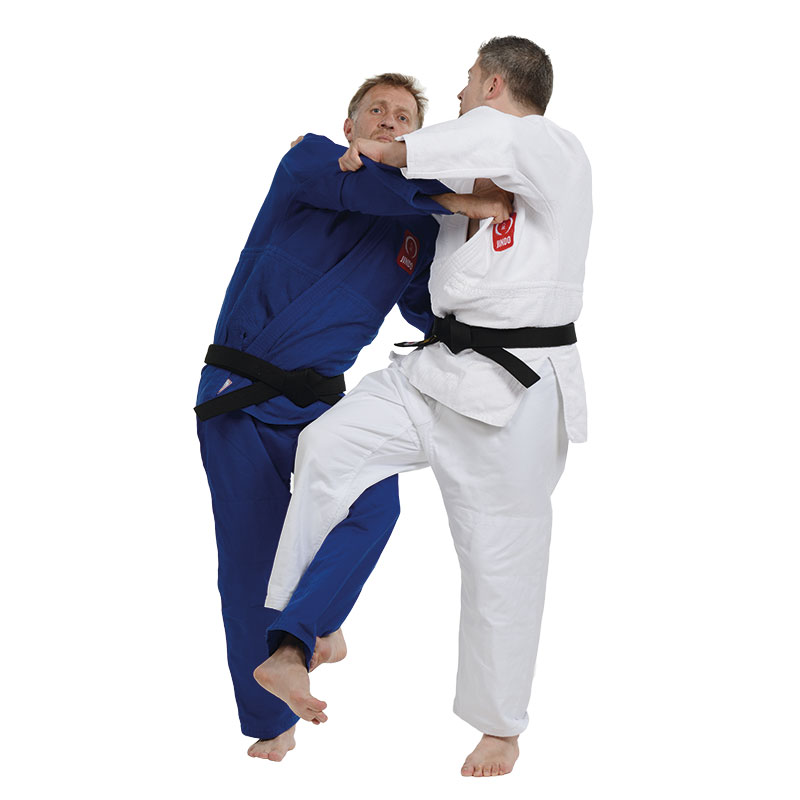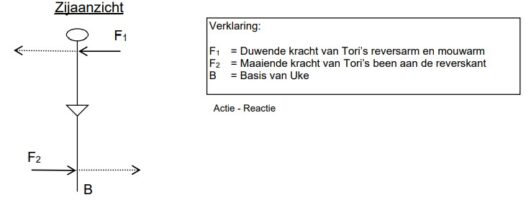Kawazu-gake 河津掛
Leg Entanglement Throw
Classification: Sacrifice Technique (Sutemi-waza) – Prohibited Technique (Kinshi-waza)
Group: Habukareta Waza (Preserved Techniques) – Not allowed in shiai or randori
Description
Kawazu-gake is a highly controlled sacrifice technique that involves a leg entanglement. Tori stands next to uke and steps his right leg in front of uke’s left leg, hooking uke’s left ankle from the inside with his foot or lower leg. While securing uke’s upper body with grips, tori throws uke backward, using the hook as leverage and dropping down into a twisting fall.
This technique is extremely dangerous, as uke’s leg is often trapped under tori during the fall, placing high rotational pressure on the knee joint. Due to this high injury risk, Kawazu-gake is banned in competitive judo (shiai) and unsupervised free practice (randori), though it remains part of historical and kata-based judo.

Biomechanics of Kawazu-gake
-
Type: Couple (F1 + F2)
-
Force components:
-
F1: Tori’s upper body controls and pushes uke backward.
-
F2: Tori’s hooked leg pulls uke’s leg forward and inward from underneath.
-
-
The throw results from a simultaneous push and pull in opposite directions, forming a classic couple.
-
Tori drops into a twisting position, spiralling uke backward off balance and into a fall.
Because uke’s leg is trapped, ukemi is extremely difficult, and injury to the knee or ankle is a serious risk—hence the ban.

Did you know?
-
The name Kawazu (河津) refers to a “frog” or “frog-like position,” because during the technique tori’s leg position resembles that of a crouched or jumping frog.
-
Jigoro Kano included Kawazu-gake in the original 1895 Gokyo no Waza, but later moved it to the Habukareta Waza (preserved/removed techniques) as awareness of safety increased.
-
Despite the ban, Kawazu-gake is still taught for historical, kata, and self-defense understanding, often in a highly controlled and assisted manner.
-
Kawazu-gake is one of the four officially banned techniques in IJF competition judo, alongside Kani-basami, Do-jime, and Ude-garami from certain angles.
Important safety note: This throw should never be practiced without direct supervision from a highly experienced judo instructor, and never in live sparring.